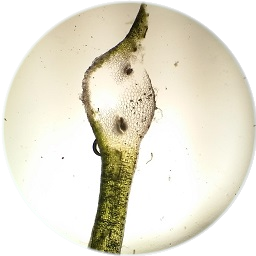
Jeango 2/2/2021, 7:01:07 PM
👉 Next.js 工程基本结构
页面结构如下,只是展示了一个静态页面,就是一个导出的渲染函数,另外还使用了 Head 组件来生成 HTML 的 head 节点下的元信息标签:
export default function Home() {
return ( JSX... )
}
```ts
import Head from 'next/head'
export default function Home() {
return (
<div className="container">
<Head>
<title>Create Next App</title>
<link rel="icon" href="/favicon.ico" />
</Head>
<main> ... </main>
<footer> ... /footer>
<style jsx>{`
@media (max-width: 600px) {
.grid { width: 100%; flex-direction: column; }
}
`}</style>
<style jsx global>{`
html,
body {
padding: 0;
margin: 0;
font-family: -apple-system, BlinkMacSystemFont, Segoe UI, Roboto,
Oxygen, Ubuntu, Cantarell, Fira Sans, Droid Sans, Helvetica Neue,
sans-serif;
}
* {
box-sizing: border-box;
}
`}</style>
</div>
)
}
```
生成的配置 .next\server\pages-manifest.json 自动包含了路由和页面的映射关系:
```json
{
"/_app": "pages/_app.js",
"/_error": "pages/_error.js",
"/_document": "pages/_document.js",
"/": "pages/index.js"
}
```
所以,将 pages 作为页面组件的根目录,Next.js 自动处理路由映射,需要什么页面就添加什么脚本文件,这就很像在其它语言开发 Web 应用,只不过这是使用的是 JSX 和 React Components。
尝试创建一个 /posts/first-post.js 作为 post 页面,导出一个默认函数作为模块的渲染函数,然后通过 /posts/first-post 地址查看。当然,也可以创建其它名字的页面脚本,只要导出渲染函数即可以,以下这个示范如何使用反引号来避免 pre 标签显示的代码被处理:
```ts
export default function FirstPost(){
return (
<>
<pre className="card">
{`
PS > npm run build
> learn-starter@0.1.0 build C:\coding\md-code\react-nextjs-blog
> next build
info - Creating an optimized production build
info - Compiled successfully
info - Collecting page data
info - Generating static pages (3/3)
info - Finalizing page optimization
Page Size First Load JS
┌ ○ / 7.34 kB 70.5 kB
├ ○ /404 3.46 kB 66.6 kB
└ ○ /posts/first-post 310 B 63.5 kB
+ First Load JS shared by all 63.2 kB
├ chunks/f6078781a05fe1bcb0902d23dbbb2662c8d200b3.783b05.js 13.3 kB
├ chunks/framework.e2fe4a.js 41.8 kB
├ chunks/main.f685e0.js 6.37 kB
├ chunks/pages/_app.7d2df5.js 1.01 kB
└ chunks/webpack.50bee0.js 751 B
λ (Server) server-side renders at runtime (uses getInitialProps or getServerSideProps)
○ (Static) automatically rendered as static HTML (uses no initial props)
● (SSG) automatically generated as static HTML + JSON (uses getStaticProps)
(ISR) incremental static regeneration (uses revalidate in getStaticProps)
PS >`}
</pre>
<style>{`
body {background: darkblue; }
pre {color: cornsilk; white-space: break-spaces;}
`}</style>
</>
)
}
```
或者使用 React 的 dangerouslySetInnerHTML 属性来设置 innerHTML:
<div dangerouslySetInnerHTML={{__html:`${md}`}}></div>
在以上的构建报告中,看到最后几行,不同的前缀符号表示 Next.js 对工程的文件进行了四种处理:
- λ (Server) 运行时代表服务端渲染,即页面中实现了
getInitialProps()或getServerSideProps())方法。 - ○ (Static) 自动静态化 HTML 渲染,由于页面没有使用初始参数数据;
- ● (SSG) 自动静态化生成,静态 HTML + JSON 数据组合成页面,页面实现了
getServerSideProps())方法。 - (ISR) 增量静态化重新生成 Incremental Static Regeneration,在页面实现的
getServerSideProps())方法中返回了revalidate参数;
后面再深入解析这些方法,和页面的渲染。
